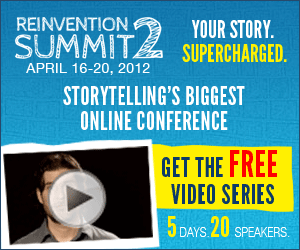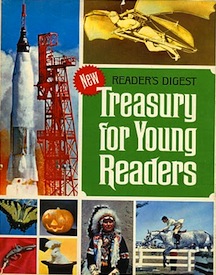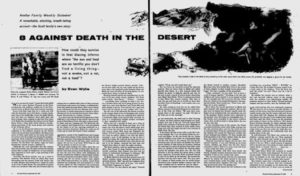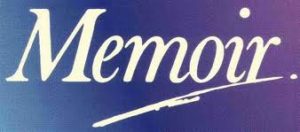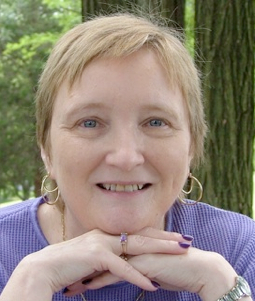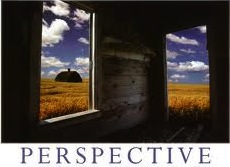
My introduction to Diane Wyzga was several years ago through Stephanie West Allen, who had published an insightful interview with Diane on her blog. Diane asked not long ago to participate in my Q&A series, and I was delighted to welcome her to the fold. The Q&A will run over the next several days.
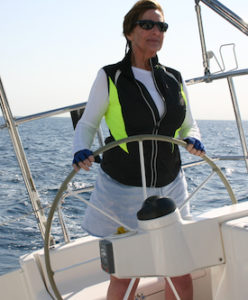 Bio: [from Diane’s blog]: Diane F. Wyzga, RN, JD, and professionally trained storyteller has become nationally known as an experienced litigation consultant for her work using the principles and techniques of storytelling to persuade, inspire, and guide as a key trial strategy. Skillful use of narrative creates meaning for the decision-maker to relate a stranger’s case to their own experience.
Bio: [from Diane’s blog]: Diane F. Wyzga, RN, JD, and professionally trained storyteller has become nationally known as an experienced litigation consultant for her work using the principles and techniques of storytelling to persuade, inspire, and guide as a key trial strategy. Skillful use of narrative creates meaning for the decision-maker to relate a stranger’s case to their own experience.
Diane’s clients effectively employ storytelling principles to identify and develop the legal case story that will guide them through discovery, help strategize the trial presentation from voir dire through closing arguments, and influence decision-makers far beyond the reach of any PowerPoint presentation. How does this work? Using language with power, passion and precision any skillful lawyer can translate case images into compelling themes and desired verdict action.
Lightning Rod Communications is affiliated with other nationally recognized litigation and jury consultants to provide a broad spectrum of litigation consulting services for our clients. Diane’s specialties are legal communications, focus group research, and precisely identifying the trial story that needs to be told for verdict or ADR success.
Diane has authored many articles on storytelling and legal storytelling for such diverse publications as The Warrior, The Jury Expert, Diving in the Moon, TRIAL, The American Association for Justice, and Trial Talk (for Colorado Lawyers), as well as having contributed to number of professional texts for lawyers.
All of that seems easy enough. At least in hindsight. This current effort to join the blogosphere is driven by a desire to identify the larger, more universally themed stories we tell. Humans are ‘homo narrans’ grounded in stories and the telling of stories to relate and understand each other. I want to know: What are the stories we are telling? For what purpose and uses? And what are the words we use to express the emotional meaning of those stories?
When not helping lawyers identify, shape and effectively deliver the stories they need to tell for their clients, Diane is actively engaged as a Lady Beewrangler managing her own apiary, paddleboarding and kayaking.
Q&A with Diane Wyzga, Question 1:
Q: Your specific niche of legal storytelling is unique. This field seems to be fairly well established and growing; for example, a Google search reveals conferences, publications, and consulting practices. Can you talk about the evolution of the profession from the time you entered it to today? Were you a pioneer, or was it already well established when you entered? What changes have you seen?
A: I believe I was a pioneer bringing storytelling skills, techniques and principles to the legal profession. Prior to my coming on the scene, actors like Katherine James and Alan Blumenfeld of Act of Communication were teaching lawyers “platform” skills to engage the listener in the theater of the courtroom.
With Lightning Rod Communications I set out to go where I was needed but not wanted and leave when I was wanted but not needed. As an experienced trial attorney shared with me, “We need stories and we need to know how to persuade with stories. Yet, we ‘diss’ storytelling at the same time we secretly crave it.” I thought this was a pretty vulnerable statement to make.
Lawyers who helped show me the way to be of use to lawyers are those who call themselves “Warriors” after graduating from Jerry Spence’s Trial Lawyers College. They “get” the purpose and value of storytelling more than many of their peers. Why? As one of them told me, “The college is all about doing an archeological dig on yourself to clear away all the debris and artifice that stands between you and an open, authentic conversation with another human being.”
Has story work expanded in the legal field? Yes and no. Yes, there are articles on bringing your case to life with storytelling; however, they tend to be a rehash of Robert McKee’s work [Story: Substance, Structure, Style and Principles of Screenwriting] telling the lawyer what to do not how to do it. I believe that you have to stand and deliver your work, not just read about it.
My own work evolved from teaching storytelling skills to the larger world of story techniques and principles. For example, now I teach and speak nationally on applying storytelling to the whole of legal discourse from writing briefs to alternative dispute resolution to witness preparation to courtroom trials. One of my workshops is “Trial Blueprints.” I show the lawyers what a case looked like before and after the use of storytelling principles to identify, shape and deliver the trial story. Then we apply the same techniques to their trial stories by emphasizing two things: (1) critical listening, and (2) the story equation: “content + context + value = emotionally meaningful story” so they can tell their client’s story with power, passion and precision.
My experience has shown me that story and litigation are still at an uneasy fit. Granted, this is a complex time for litigators. They are under siege on many fronts not the least of which is the “Googling-Tweeting-Texting Juror”. But to gain traction in the human arena that hears cases, we still have a very long way to go to push back what has become a reversion to the familiar terrain of fact-based structure. Following a current model, lawyers are using reactive brain to frighten, not reflective mind to enlighten. By staying tied to a rehash of a familiar model lawyers are short-changing themselves and decision-makers.
More so than in any other profession it seems that some judges and lawyers still believe that the storytelling concept, while crucial, is so far outside their frame of reference, skill set, comfort zone, and experience that it seems little more than a luxury with little value. If we do not learn the effects of story and practice its uses when we speak to decision-makers, we have lost the singular opportunity to get the action we desire.
Many lawyers still want to talk about the facts of what happened but not why or how an event happened. Facts are necessary. Facts get the case evidence-proofed; but only a heartfelt story artfully told will get it decision-maker proofed.
why or how an event happened. Facts are necessary. Facts get the case evidence-proofed; but only a heartfelt story artfully told will get it decision-maker proofed.
I am encouraged by efforts such as those at Sturm College of Law inviting practitioners to explore the role of narrative in both law practice and law teaching to develop uses for narrative as a tool of persuasion. Another example of the growing use of story in the legal profession is Gordon Johnson and TBI Voices to educate the public about the many mysteries of traumatic brain injury. Finally, there are many legal voices in alternative dispute resolution — such as J. Kim Wright, author of bestseller, Lawyers as Peacemakers, Practicing Holistic, Problem-Solving Law (ABA, 2010) — who are relying on storytelling principles to find successful solutions to human problems.
emergency room, in the out patient clinic. Nurses hold the space for patients and families to tell their stories. I worked as a pediatric nurse, so I had to learn to employ a lot more whole-body listening to understand what was said between the lines. A child could tell you they were not hurting — so they could appear brave — but one look at the clenched face told another story.




